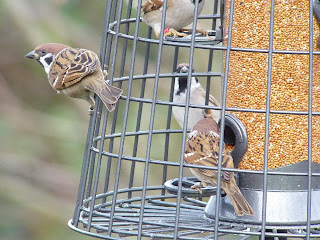Next year, I will be mainly doing...
I know that it isn't December until this coming Thursday, but my mind is already wandering towards 2012. So much for carpe diem ... What I'm thinking about is this. Where do I concentrate my efforts next year? So far my choices are: Pan-listing: go for it. Blast the hell out of everything on offer, blitz the list and assault 3500. The downside would be plenty of stringing and a feeling of treating natural history as a product to consume and spit out. Beddington love-in: embrace the smelly plot and study its undoubted wildlife in a celebration of urban diversity. The downside would be getting very muddy and possibly having to endure plenty of gripping off from the hard-core birders skywatching from the hide as I potter about looking at the ground mostly. Go birding: Do I remember that? The days when I looked at birds and little else? I could finally get over 400 and look at some of the upstarts in the face again. Downside? I don't like many birders... Botanical






